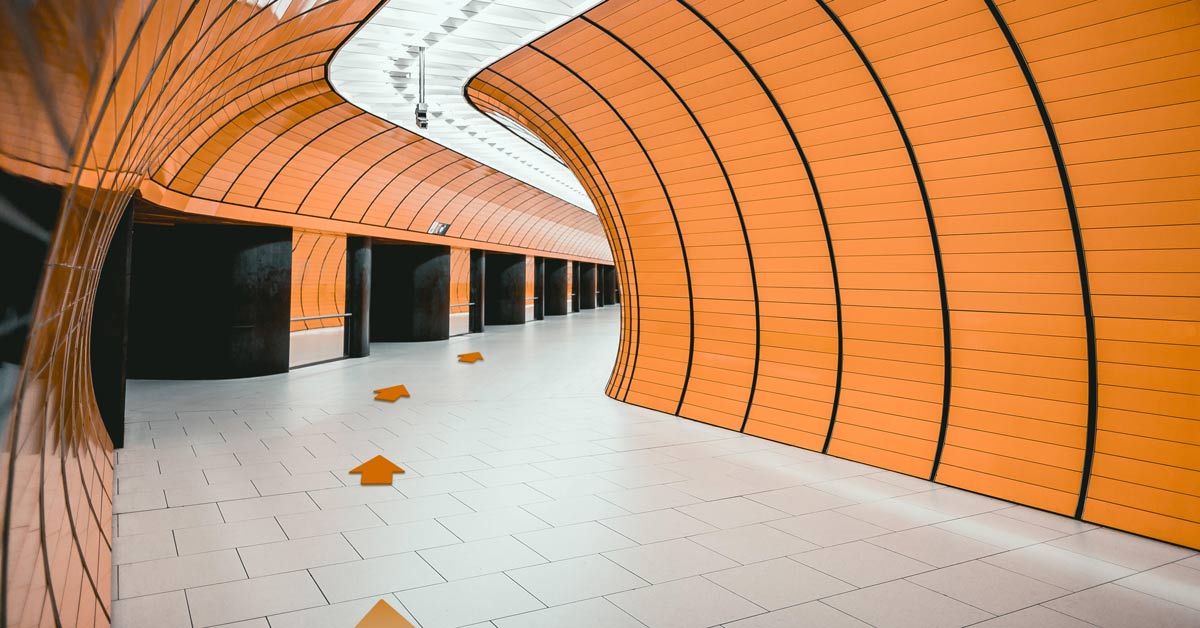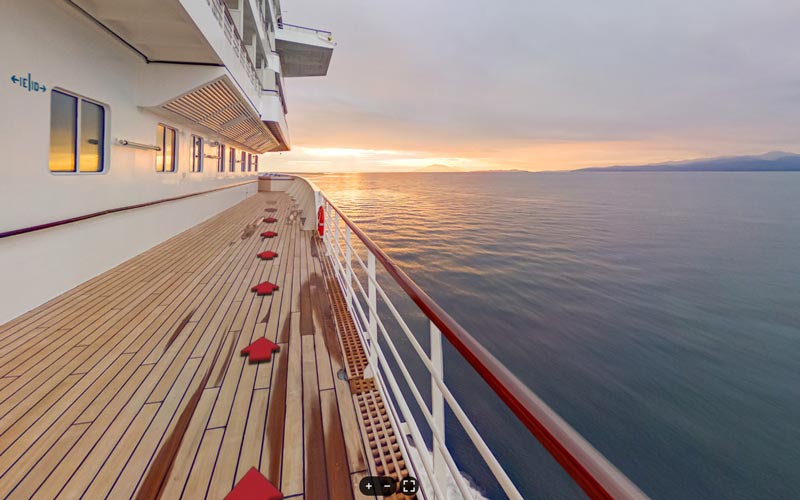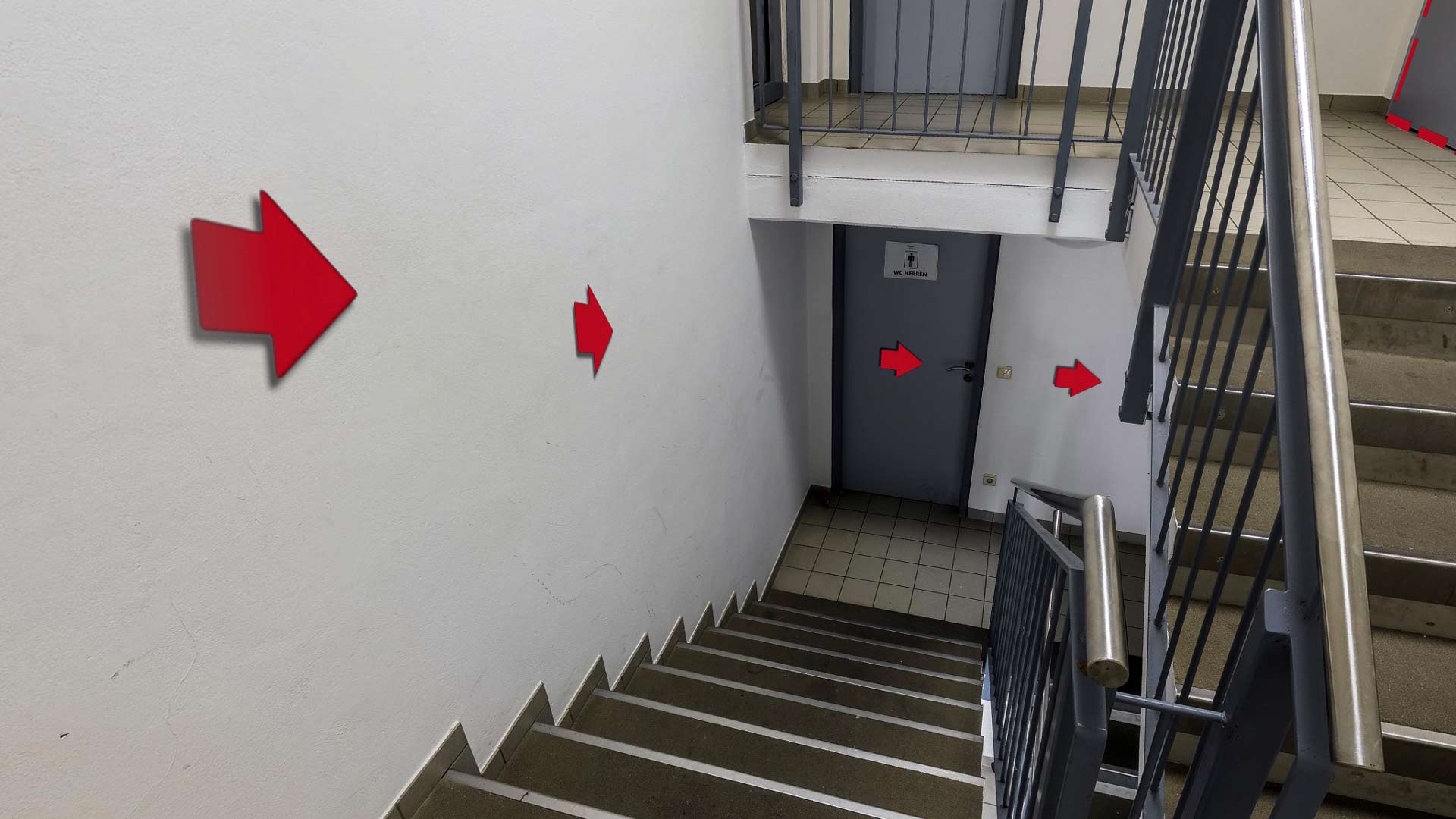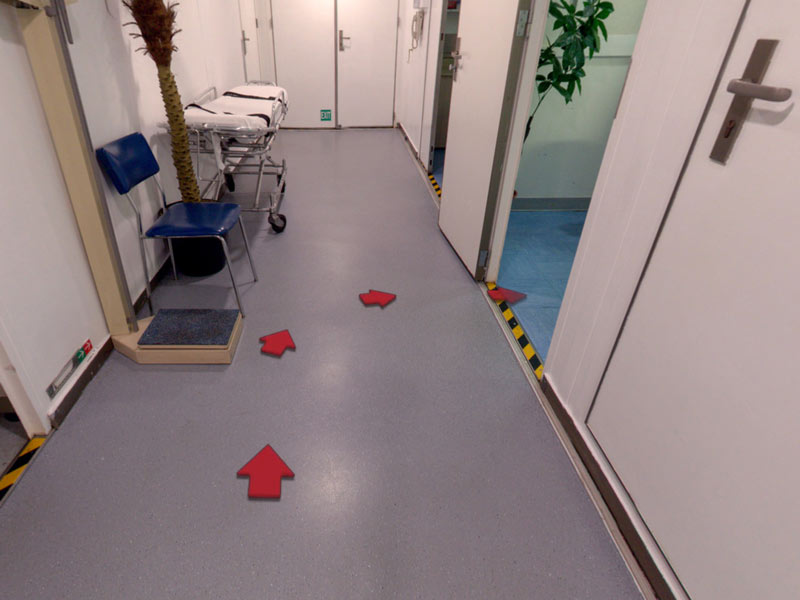Table of Contents
Introduction
Explore the benefits and workings of EXP360’s virtual wayfinding solution and learn how it revolutionizes indoor navigation in various industries. Enhance visitor experiences, improve efficiency, and provide seamless navigation with this innovative tool.
In today’s fast-paced world, the ability to navigate indoor spaces efficiently is essential for both individuals and businesses. Virtual Indoor Wayfinding solutions, like EXP360’s Virtual Wayfinding, have emerged as a game-changer in guiding visitors through complex facilities.
In this blog post, we will dive into the concept of wayfinding, explore the differences between passive and active wayfinding, and introduce the EXP360 passive virtual wayfinding solution. We’ll discuss its advantages, how it works, and its implementation across various industries. Join us as we uncover the potential of virtual indoor wayfinding and learn how it can transform the navigation experience for your visitors.

Understanding Indoor Wayfinding and Its Importance
Wayfinding is the process of determining one’s location, setting a route, and navigating through an environment to reach a specific destination. Indoor wayfinding is particularly important in large or complex facilities, where it can be challenging for visitors to find their way around. Industries such as hospitality, retail, healthcare, and education can greatly benefit from effective indoor wayfinding solutions.
The importance of indoor wayfinding lies in the many advantages it brings to both users and businesses:
- Enhanced customer experience: Indoor wayfinding helps users easily navigate through facilities, reducing the time and effort spent searching for a specific location. A positive customer experience leads to increased satisfaction and loyalty.
- Improved efficiency for employees and businesses: With more accessible indoor navigation, employees can quickly locate their destinations, optimizing their workflow and productivity. As a result, businesses can enjoy increased efficiency and potentially higher sales.
- Reduced confusion and frustration: Effective wayfinding minimizes confusion for visitors and employees, creating a more enjoyable experience and reducing the likelihood of people getting lost or frustrated.
- Accessibility and inclusivity: Indoor wayfinding solutions can be designed to accommodate individuals with disabilities, ensuring that everyone can navigate through facilities with ease.
Wayfinding is a crucial aspect of indoor navigation that enhances user experience, improves efficiency, and ensures accessibility. Implementing effective wayfinding solutions can significantly benefit various industries and contribute to overall user satisfaction.
The Difference Between Passive and Active Wayfinding
Wayfinding solutions can be categorized into two types: passive and active. Both methods aim to help users navigate through indoor environments, but they differ in their approach and technology used.
Passive Wayfinding
Passive wayfinding solutions provide users with visual cues and guidance without the need for any user interaction or real-time location tracking. These solutions include signage, floor plans, and virtual tours. Passive wayfinding is often more straightforward to implement, as it doesn’t require complex technology or hardware installation. EXP360’s virtual wayfinding is a passive solution, utilizing 360-degree images and generic arrows to guide users through a facility.
Key features of passive wayfinding:
- No real-time location tracking
- Relies on visual cues, such as signage and virtual tours
- Easier to implement and maintain
- More affordable solution compared to active wayfinding
- No need for additional hardware, like beacons or sensors

Active Wayfinding
Active wayfinding solutions involve real-time location tracking and user interaction to provide guidance. These solutions often rely on technologies such as Bluetooth beacons, Wi-Fi signals, or other sensor-based systems to determine a user’s location within a facility. Active wayfinding provides turn-by-turn navigation, similar to GPS navigation systems, and requires users to interact with an app or device to receive directions.
Key features of active wayfinding:
- Real-time location tracking
- Involves user interaction with an app or device
- Provides turn-by-turn navigation
- Requires additional hardware and technology, such as beacons or sensors
Passive and active wayfinding solutions differ in their approach to guiding users through indoor environments. Passive wayfinding relies on visual cues and doesn’t require real-time location tracking or user interaction, while active wayfinding involves location tracking and user interaction to provide turn-by-turn navigation. Choosing the right solution depends on the specific needs, requirements of your organization or facility, and budget.
Introducing the EXP360 Passive Wayfinding Solution
Key features of the EXP360 passive virtual wayfinding solution:
- No technical installation required: Unlike active wayfinding solutions that may need hardware installations, such as beacons or sensors, the EXP360 virtual wayfinding solution requires no additional hardware, making it easier and more cost-effective to implement.
- Multi-use of content: Leverage the existing 360-degree content of your venue for wayfinding purposes, without the need to create new content specifically for navigation.
- Web-based delivery: The EXP360 virtual wayfinding solution is delivered through web browsers, making it accessible on a variety of devices, such as smartphones, tablets, and desktop computers.
- Easy maintenance: With the EXP360 Control Center, maintaining and updating your wayfinding tours is simple. The dynamic directions allow for easy modifications, such as adding new steps, creating detours, or updating a complete wayfinding tour as needed.
- Customizable elements: Enhance your wayfinding tours with various elements, such as generic moving arrows, door indicators, floor plans, and signage, to provide users with clear and helpful navigation cues.
- Affordable budget: The EXP360 passive virtual wayfinding solution offers a cost-effective alternative to more expensive active wayfinding systems. With no need for additional hardware installations, lower maintenance costs, and the ability to reuse existing 360-degree content, organizations can deploy an efficient wayfinding system within their facilities without breaking the bank. This makes the EXP360 virtual wayfinding solution an attractive option for businesses looking to enhance their user experience while keeping costs under control.
By implementing the EXP360 passive wayfinding solution, you can improve your visitors’ experience and reduce confusion, allowing them to navigate your facility with ease and confidence.

EXP360 offers an innovative passive wayfinding solution designed to simplify navigation and enhance user experience within various facilities. By utilizing 360-degree images and generic arrows, our dynamic system provides clear and intuitive directions to visitors, making it easy for them to find their way around. The EXP360 Wayfinding is suitable for a wide range of industries, including schools, universities, hotels, cruise lines, public transit, and public services.
Implementing EXP360 Virtual Wayfinding Solution in Different Industries
The EXP360 virtual wayfinding solution is a versatile and effective tool that can be implemented across various industries to enhance visitor experience and streamline navigation. Here’s a step-by-step guide on how the solution works and how it can be tailored to different sectors:
How the EXP360 Virtual Wayfinding Solution works
Step 1: Produce 360° content for every step
Capture 360-degree images of your facility using a 360-degree camera or hire our professional team to do it for you.
Step 2: Upload the content to the EXP360 VR Cloud
Upload the stitched 360 images to the EXP360 Control Center and add elements such as generic moving arrows, door indicators, signs, floor plans, and more. These elements are dynamically displayed based on the user’s destination and direction, guiding them easily through the facility.
Step 3: Deliver the wayfinding tours to mobile devices
Make the EXP360 wayfinding tours accessible through invitation emails, your website, or QR codes at your facility entrance. This ensures that visitors can easily access and navigate your facility using their mobile devices.
Step 4: Navigate with ease and confidence
Visitors can now effortlessly navigate your facility by following the dynamically generated arrows displayed based on their destination and direction.
Step 5: Maintain the wayfinding tours with ease
With the EXP360 Control Center, maintaining your wayfinding tours is simple. The dynamic directions allow for easy updates, such as adding steps, creating detours due to construction, or changing an entire wayfinding tour. Update your 360 images and directional elements in the Control Center, and your visitors will always have access to the most current information.
Examples of industry-specific applications
Hospitality: Hotels can guide guests from the reception area to their rooms, restaurants, and other amenities within the property.
Cruise Industry: Cruise Lines can help passengers navigate the ship from their cabins to dining areas, pools, and entertainment venues.
Healthcare: Hospitals and clinics can direct patients and visitors to various departments, patient rooms, and other important locations.
Education: Universities and schools can assist students and staff in finding their way around campus, locating classrooms, offices, and other facilities.
The EXP360 virtual wayfinding solution can be adapted to the unique needs of each industry, providing an efficient and user-friendly navigation experience for visitors and staff alike.

Conclusion
Virtual indoor wayfinding has revolutionized navigation within large and complex facilities, making it easier and more efficient for visitors and staff to find their way around. The EXP360 passive wayfinding solution offers a flexible, budget-friendly, and user-centric approach to indoor navigation, eliminating the need for technical installations and complicated maintenance.
By implementing EXP360’s virtual wayfinding solution, organizations across various industries can enhance their visitors’ experience, improve efficiency, and make navigation a seamless part of their operations. By delivering dynamic, mobile-ready wayfinding tours, organizations can ensure that everyone can navigate their facilities with ease and confidence.
In summary, the EXP360 passive wayfinding solution is an innovative and versatile tool that can transform the way people interact with indoor spaces, providing a user-friendly and efficient navigation experience across multiple industries.


